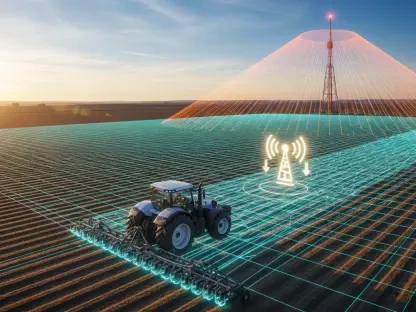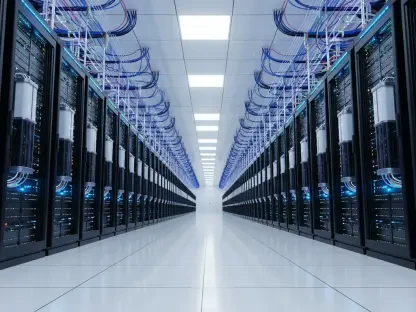In the rapidly evolving landscape of telecommunications, Communications Service Providers (CSPs) are at a critical juncture where embracing network automation has become a cornerstone for survival and growth. With the integration of Artificial Intelligence (AI) and data-driven strategies, these providers are striving to transform cumbersome manual operations into seamless, autonomous systems that promise not only to streamline processes but also to unlock significant new revenue streams. This shift is no longer a luxury but a necessity, as the industry faces mounting pressure to enhance efficiency while meeting the escalating demands of a digital-first world. The potential benefits are immense, from slashing operational costs to enabling innovative services that can redefine market positions. However, the journey toward full autonomy is fraught with complex challenges that span technology, culture, and organizational dynamics. This article delves deep into the structured frameworks guiding CSPs through this transformation, examines the formidable obstacles they encounter, and highlights the critical questions that must be addressed to bridge the gap between experimentation and scalable production. By exploring industry benchmarks and real-world applications, the discussion aims to shed light on how CSPs can navigate this intricate terrain to achieve lasting success in an increasingly competitive arena.
Charting the Path: A Framework for Autonomous Progress
The transition to network automation is not a sudden leap but a carefully orchestrated progression through defined stages of maturity. The TM Forum’s Autonomous Networks (AN) Project provides a comprehensive six-level model that serves as a vital roadmap for CSPs, starting at Level 0 with entirely manual operations and culminating at Level 5 with fully autonomous, cognitive systems. Currently, a majority of CSPs find themselves at Level 2, where partial autonomy is achieved through predefined, static rules governing specific operations. Meanwhile, industry leaders such as China Mobile are pushing boundaries, nearing Level 4 with advanced, predictive decision-making powered by AI. This model is more than a mere classification; it offers a clear lens through which CSPs can evaluate their current capabilities and set ambitious yet achievable targets for the future. Understanding where an organization stands on this spectrum is the first step toward crafting strategies that prioritize incremental advancements, ensuring that each level builds a stronger foundation for the next. The ultimate vision is a shift from systems requiring constant human intervention to those where humans define intent and AI agents execute with precision, a transformation that demands both technological investment and strategic foresight.
Beyond the theoretical framework, the practical implications of moving through these maturity levels reveal the depth of change required. Advancing from one level to another involves not just adopting cutting-edge tools but also reimagining workflows to accommodate AI-driven processes. For instance, reaching Level 3—conditional autonomy—requires systems to adapt in real time to environmental changes within specific domains, a feat that hinges on robust data integration and machine learning capabilities. This progression is exemplified by companies like Telefonica Vivo, which have started to implement cross-domain automation, inching closer to higher autonomy. The challenge lies in balancing the pace of technological adoption with the readiness of the organization to embrace such shifts. Each level demands a deeper integration of AI agents capable of complex reasoning and task-specific execution, moving away from monolithic systems to lightweight, ephemeral solutions. For CSPs, this journey underscores the importance of aligning technical upgrades with a cultural acceptance of automation, ensuring that the workforce is prepared to transition from hands-on roles to strategic oversight, thereby enabling a smoother ascent through the maturity model.
Stumbling Blocks: Identifying Barriers to Automation
Despite the clear benefits and structured guidance provided by maturity models, CSPs face significant hurdles in scaling network automation from pilot phases to full production environments. Among the most pressing challenges is readiness, which entails establishing cross-functional programs that unify disparate teams and workflows under a common automation strategy. Without this alignment, efforts often fragment, leading to inefficiencies that undermine the very goals automation seeks to achieve. Financial justification poses another formidable barrier, as demonstrating a clear return on investment (ROI) in a field marked by rapid technological evolution remains a complex task. Many CSPs struggle to build compelling business cases that justify the upfront costs of automation initiatives, especially when outcomes are not immediately quantifiable. These challenges are compounded by the broader need to shift organizational mindsets toward viewing automation not as a threat but as a catalyst for innovation and growth, a perspective shift that is often harder to achieve than any technical upgrade.
Equally daunting are the issues of solution scoping and operational acceptance, which further complicate the path to autonomy. Solution scoping involves the intricate task of integrating modern automation tools with legacy IT systems, a process that often reveals compatibility issues and requires meticulous planning to avoid operational disruptions. This architectural fit is crucial, as mismatched systems can lead to costly delays and diminished outcomes. Meanwhile, operational acceptance hinges on building trust among staff who may harbor skepticism about automated systems replacing traditional roles. This resistance can stall progress, as the value of automation is only realized when employees embrace it as a tool for empowerment rather than replacement. Additionally, the lack of engineering accelerators—such as access to advanced platforms, skilled talent, and robust tools—often slows implementation, leaving CSPs struggling to keep pace with industry demands. These blockers are not isolated technical problems but are deeply intertwined with cultural and organizational dynamics, requiring a holistic approach that addresses both human and systemic factors to drive meaningful advancement.
Strategic Solutions: Critical Questions for Implementation
To overcome the myriad challenges blocking the path to network automation, CSPs must adopt a pragmatic decision-making framework that focuses on actionable solutions. A set of four essential questions provides a structured approach to navigating these obstacles, starting with how to ensure the right data reaches the appropriate AI agent without overwhelming systems with irrelevant information. This requires a focus on minimal viable datasets tailored to specific tasks, enhancing efficiency and reducing processing burdens. Another critical consideration is equipping these agents with the right tools while establishing secure guardrails to prevent misuse or errors, thereby maintaining system integrity. These questions are not abstract musings but practical tools that help CSPs pinpoint specific pain points, ensuring that automation initiatives are both targeted and effective in addressing real-world needs.
Further exploration of this framework reveals the importance of aligning technology with context and maintaining oversight of automated processes. Matching the right AI model to each task is vital for optimizing performance, as different scenarios demand varying levels of complexity and capability in automation solutions. For instance, a model suited for predictive maintenance may not be ideal for real-time traffic management, underscoring the need for tailored approaches. Equally important is the monitoring of interactions between AI agents and between agents and human operators, a step that ensures transparency and accountability in automated systems. By systematically addressing these questions, CSPs can transition promising pilot projects into scalable, production-ready solutions that deliver tangible benefits. This approach fosters trust in automation by demonstrating reliability and value, encouraging broader adoption across the organization and paving the way for more advanced implementations that push the boundaries of what autonomous networks can achieve.
People and Processes: The Role of Organizational Change
While technological innovation is a key driver of network automation, its success ultimately depends on the human element and the organizational transformation that accompanies it. Siloed data and operational structures within CSPs often hinder the seamless integration of AI across business units, creating bottlenecks that stifle progress. Breaking down these barriers requires a concerted effort to foster collaboration and ensure that automation initiatives are not confined to isolated departments but are embraced as a company-wide priority. Leadership plays an indispensable role in this process, particularly at the executive level, where CEOs must champion the cause by aligning teams around a unified vision and embedding AI into the strategic fabric of the organization. Without this top-down commitment, even the most sophisticated tools risk becoming underutilized, failing to deliver the transformative impact they promise.
A compelling illustration of how organizational redesign can amplify technological advancements comes from the collaboration between Swisscom and Netcracker, which has yielded impressive results in autonomous network operations. By rethinking workflows and reducing dependencies between teams, Swisscom enabled individual domains to innovate independently, integrating AI without disrupting other areas. This approach led to measurable outcomes, including a significant reduction in incident rates within specific network domains and a drastically shortened timeline for deploying new features. Such success highlights that automation is not solely about deploying cutting-edge systems but about aligning those systems with a workforce prepared to leverage them. It emphasizes the need for a cultural shift where employees view automation as an enabler of efficiency and creativity, rather than a threat to their roles, ensuring that the human element remains at the heart of technological progress.
Moving Forward: Lessons and Next Steps
Reflecting on the journey of network automation, it’s evident that CSPs have tackled a multifaceted challenge that blends technological innovation with profound organizational shifts. The structured maturity model provided by TM Forum serves as a guiding light, mapping out the progression from manual to autonomous systems, while the identification of key blockers reveals the intricate hurdles that demand attention. Strategic questions offer a pragmatic lens through which solutions are crafted, ensuring that automation efforts are both targeted and impactful. Real-world examples, like Swisscom’s achievements, underscore that success stems from a synergy of technology and cultural adaptation.
Looking ahead, CSPs must prioritize building robust cross-functional frameworks that sustain automation initiatives beyond initial pilots, focusing on readiness and trust as foundational pillars. Investing in talent and tools to accelerate engineering capabilities will be crucial, as will continuous efforts to prove ROI through data-driven metrics that validate the business case for autonomy. Leadership must remain steadfast in driving change, dismantling silos, and fostering an environment where innovation thrives. By taking these actionable steps, the industry can transform the vision of fully autonomous networks into a reality, setting a new standard for efficiency and growth in telecommunications.









